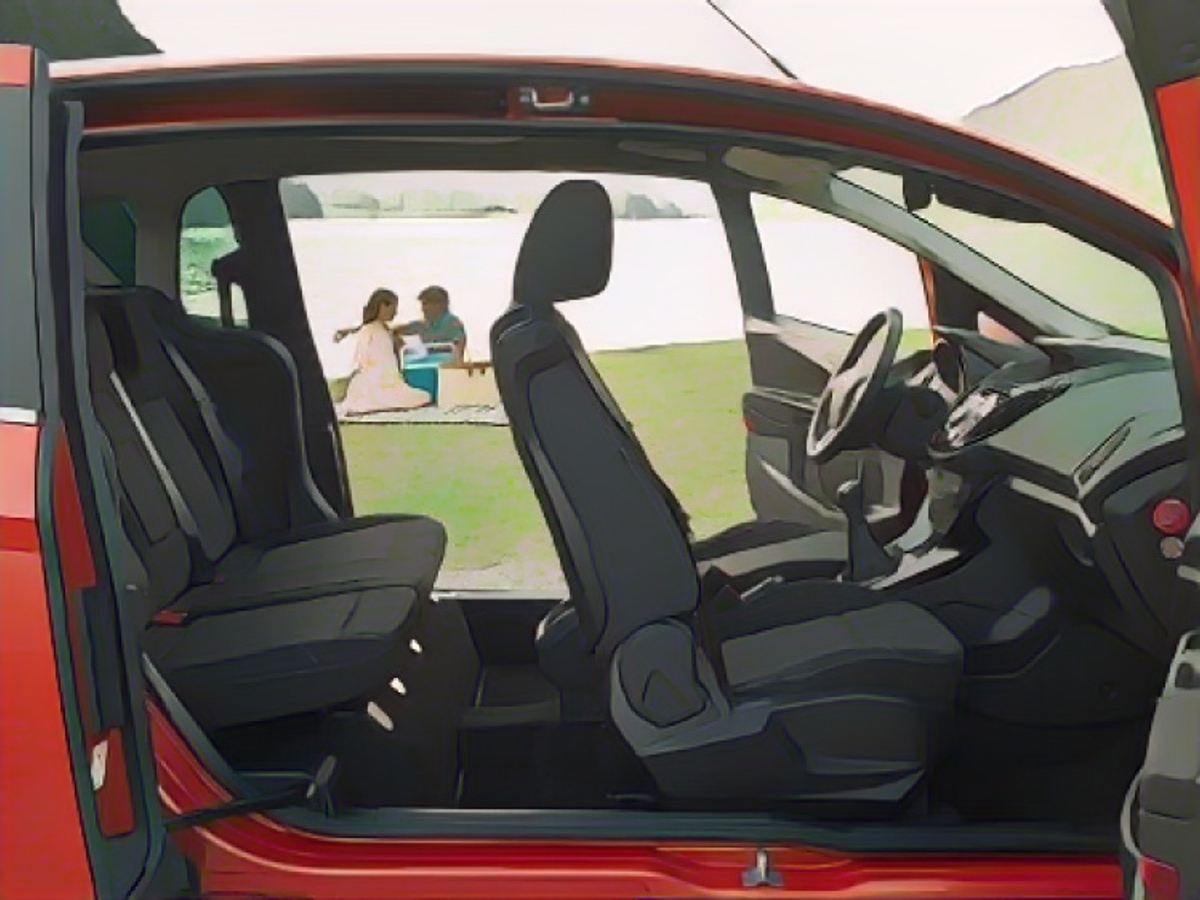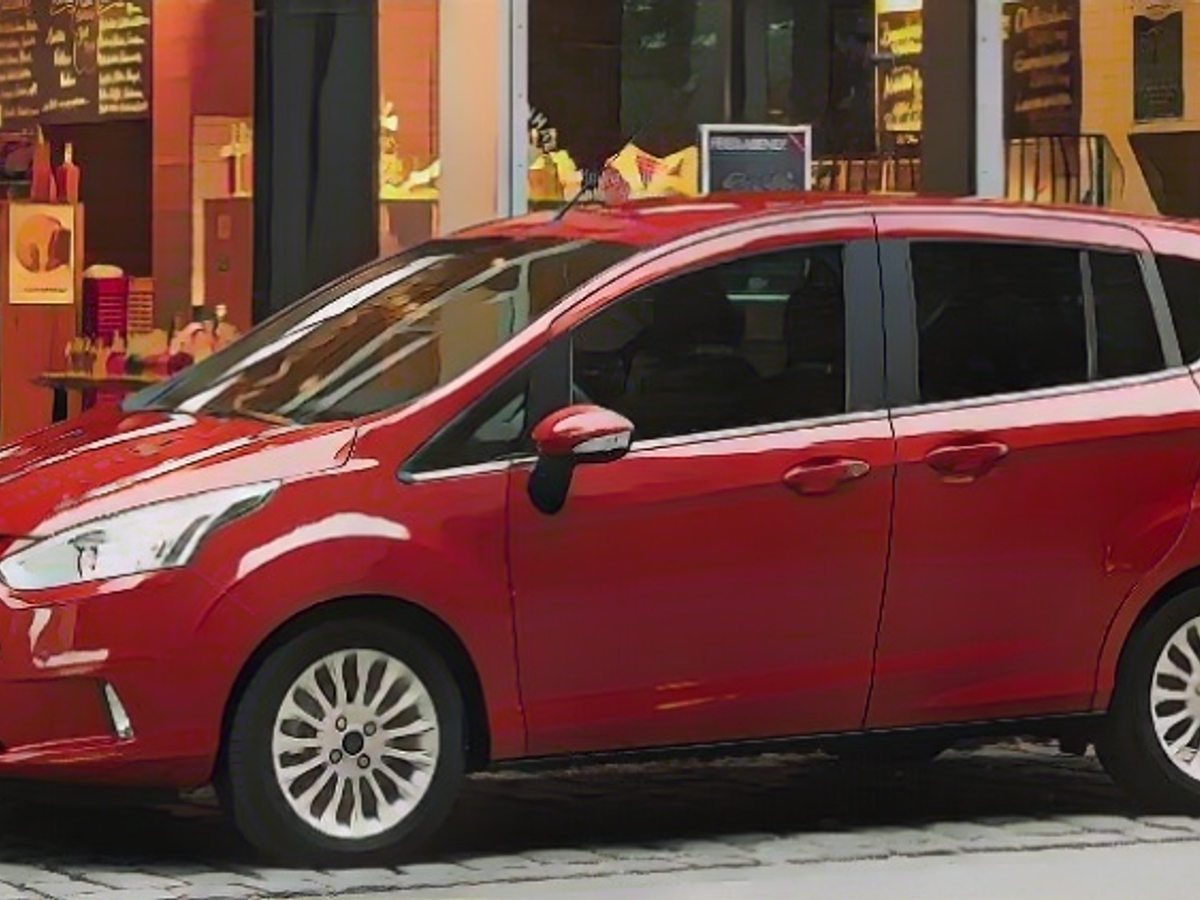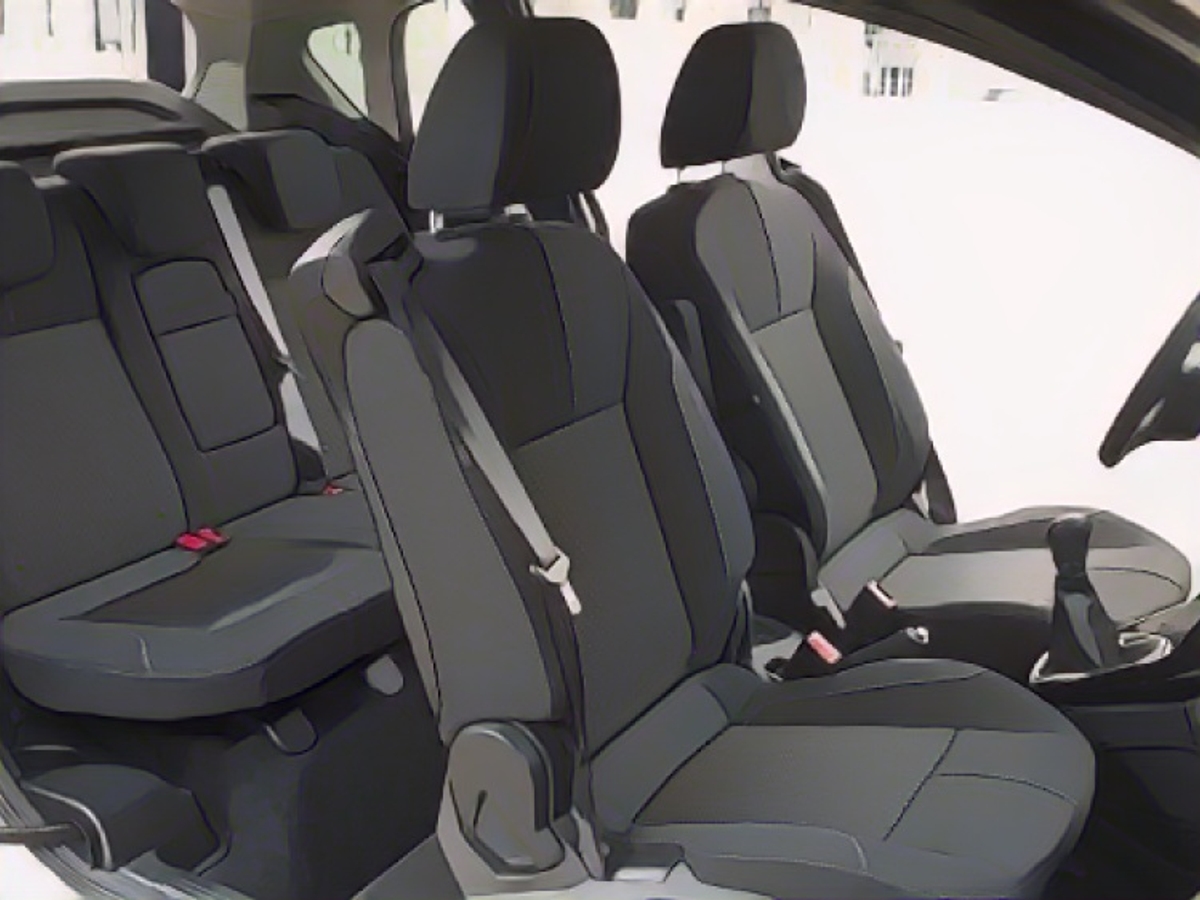Small transportation wonder Ford B-Max does well
At the end of 2012, Ford launched a small van based on the Fiesta. The B-Max differed from its larger brothers, the C- and S-Max, not only in terms of its dimensions: instead of classic rear doors, it had sliding doors. However, customers already preferred SUVs to practical vans at this time, so the B-Max was discontinued in 2017 in favor of the Eco Sport.
Body and interior

The Ford B-Max stretches to a length of 4.08 meters, making it around 10 centimeters longer than the then current Fiesta generation. In terms of height, however, the van is 10 centimeters taller than the small car, standing at 1.60 meters.
The space available for passengers is fine, but the van shows its real talent when it comes to loading. While the standard trunk offers just over 300 liters of space for a small car, folding down the rear seat backrests creates almost 1400 liters of storage space. If the front passenger seat is also folded down, long objects can also be transported.

The rear passengers can easily get in and out of the car; in addition to the wide-opening sliding doors, the lack of B-pillars also ensures large door openings. The interior is based on the Fiesta, so the center console is overloaded with buttons and switches.
Engines and drive
Three- and four-cylinder engines, petrol, diesel, naturally aspirated and turbocharged engines and a liquid gas variant: the range of engines for the B-Max, which is always driven via the front axle, was quite extensive.

The 1.4-liter four-cylinder engine with 66 kW/90 hp is ideal for drivers who like to change gear. The naturally aspirated engine provides 128 Nm, so it has to be kept revving by shifting gears. The engine was also available as an LPG version. The 1.5-liter four-cylinder engine with 77 kW/105 hp is a little more lively (150 Nm) and is the only engine in the B-Max range with an automatic transmission: a six-speed dual-clutch gearbox (Powershift) is used here. A manual five-speed gearbox is used for power transmission in the other engines.
The volume engine of the B-Max was the 1.0-liter three-cylinder turbocharged petrol engine, which was offered in 74 kW/100 hp, 88 kW/120 hp (from 2013: 92 kW/125 hp) and 103 kW/140 hp versions. The turbos impress with torque (170 to 200 Nm). On average, they consume around 5 liters, but tend to be thirsty when driving fast. With the naturally aspirated engines, an average of 6 to 6.4 liters flows through the pipes. The two diesels on offer each get by with an average of around 4 liters. The 1.5-liter produces 55 kW/75 hp, the 1.6-liter 70 kW/95 hp.
Equipment and safety

As is so often the case with small car models, the basic equipment lines of the B-Max, which was available from around 16,000 euros at the time, were also calculated with a fine-tooth comb. Air conditioning and radio were not included as standard in the Ambiente and Trend versions, but could be ordered as an option, at least in the Trend version. The highest comfort level (Titanium) appeals to comfort-oriented buyers who also value aluminum and chrome trim. First-time owners were able to tick the boxes for automatic air conditioning and navigation when signing the contract.
In terms of safety, the B-Max was well equipped with seven airbags, among other things. The van achieved a 5-star rating in the 2012 NCAP crash test. Emergency Brake Assist was not included as standard, but was available as an option, as were a reversing camera, heated windscreen, heated seats and parking sensors for the front and rear.
Quality
The B-Max performed well in the main TÜV test and passed it better than the average of all vehicles tested across all years. However, there are weak points. The TÜV inspectors often criticize the steering joints. Defective lights also give rise to criticism. Used car buyers should also inspect the springs and dampers as well as the brake disks. You should also take a look at where your chosen model is parked: Oil loss is always an issue with the B-Max.
Conclusion and market
If you are looking for a practical and easy-to-handle vehicle, the Ford B-Max is a good choice. The sliding side doors and the van's transportation talents also make an impression. According to an analysis by mobile.de, around 1000 B-Max are currently offered for sale on this platform. Prices start at around 4000 euros.
The Ford B-Max, although discontinued, can still be found as a used car in the market. Some Ford B-Max models, particularly the ones with Ford's compact van design, might require extra attention during inspections, especially for issues related to steering joints, lights, springs and dampers, and oil loss. If you're considering a used Ford B-Max, you might want to check for models with excellent MOT records, as this can be a good indicator of the vehicle's overall condition. Several used Ford B-Max models, including Ford models, can be found with ADAC's vehicle history check service, providing valuable information about the vehicle's maintenance and accident history.
Source: www.ntv.de








